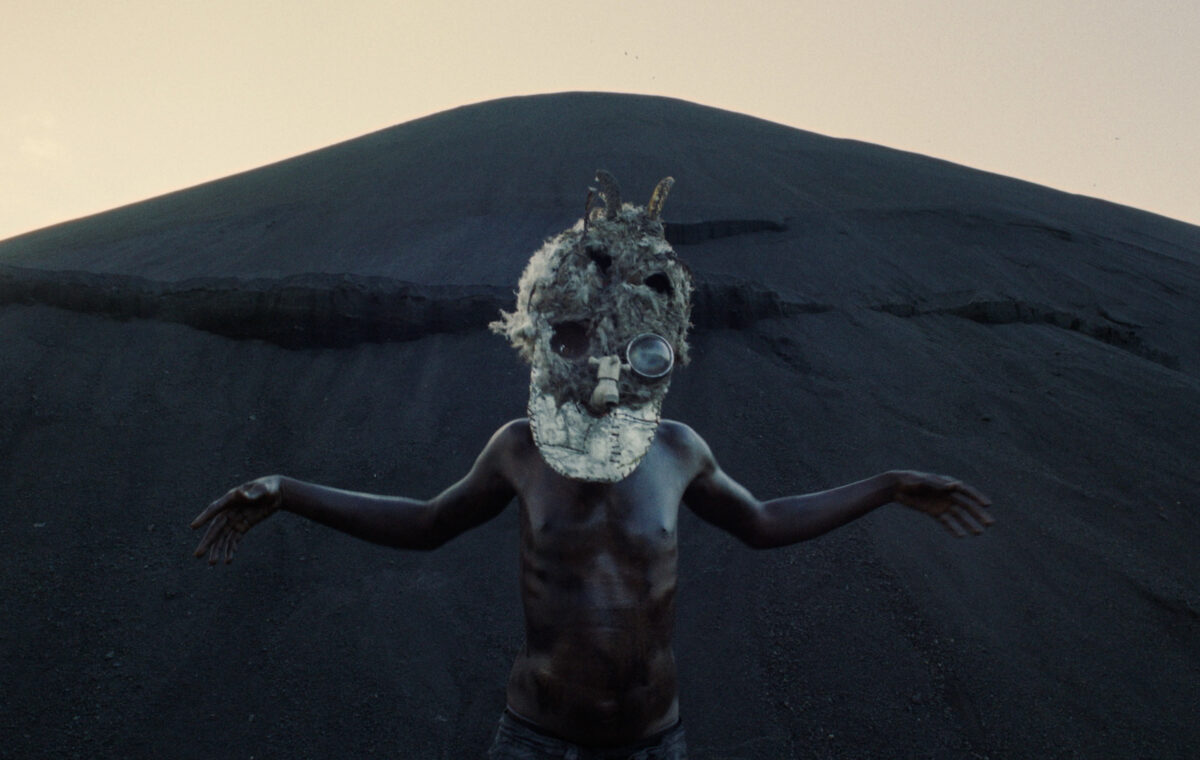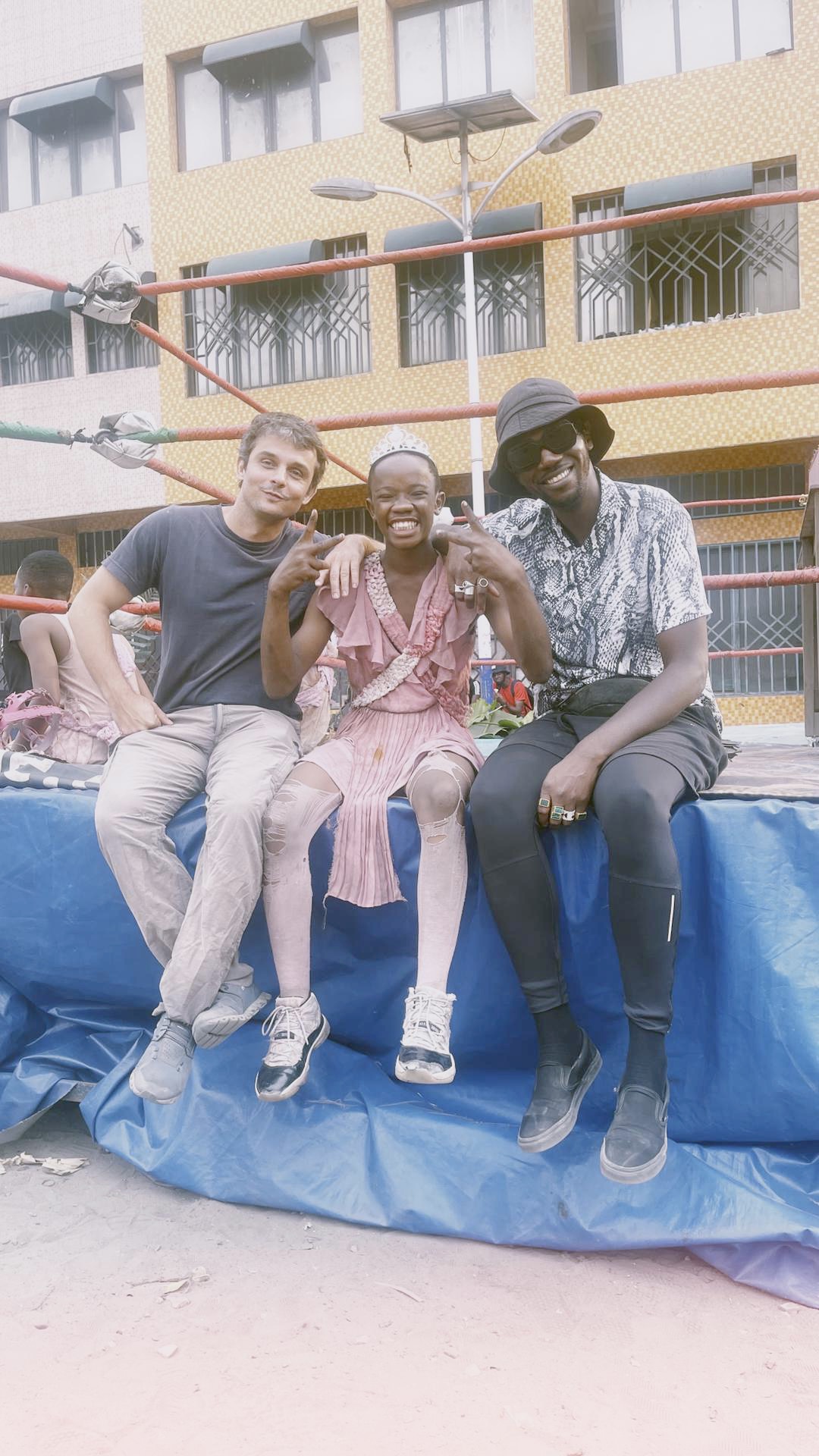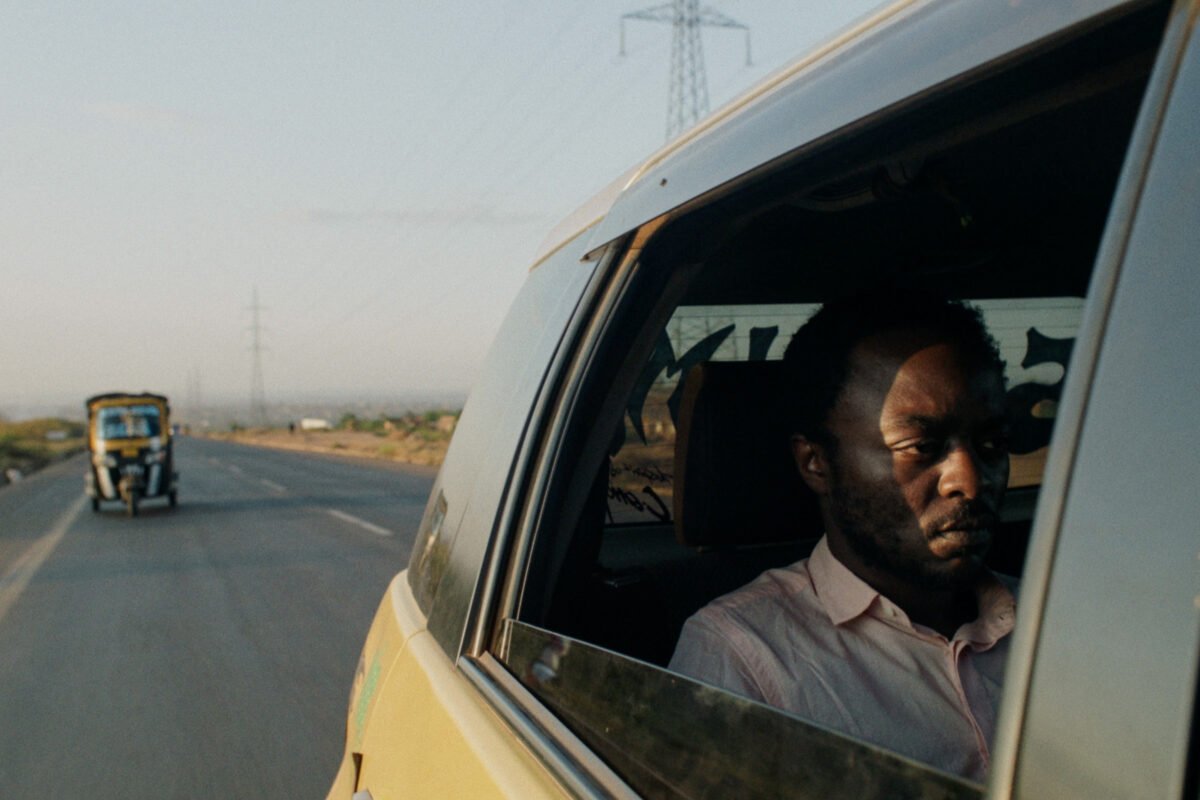Joachim Philippe on shooting Augure in Congo

A young man living in Belgium returns to his native Congo with his pregnant girlfriend to visit his family and explore his complicated past. Disowned by his mother as a child after suspicions that he is an evil sorcerer, Koffi must come to terms with the superstitiousand ancient rituals that continue to haunt him. Captured in vibrant hues by DP Joachim Philippe, Augure (Omen) sees Philippe reunite with director Baloji.
Philippe attended film school in Brussels. He graduated in 2005/6 before following two parallel paths at the same time. “One was the classic path of getting involved with a camera crew on a film set, starting as a trainee for a few films and stepping up as a loader,” says Philippe. “I did eight years of loading and I got to see a variety of cinematographers at work. I started to work when the tax shelter system started to kick in, which helped to promote Belgian movie industry all around the world. I was lucky to arrive on the professional market at this time when lots of these co-productions were kicking in. In 2008 I got a call from Les Films du Fleuve, which is the Dardenne brothers production company. They said they had a project that they couldn’t really talk about as things hadn’t yet been signed, but it was two English fellows coming to the rental company to meet with different camera assistants to see if we could do a film together. It turned out to be a Ken Loach film. I was lucky enough to get picked by the first AC, who was there to meet with different loaders.”

Phillipe subsequently worked on five of Ken Loach’s films, beginning with Looking for Eric. “I worked with great cinematographers like Robbie Ryan, Barry Ackroyd and Chris Menges. Ken likes to have people he knows around him. We were lucky enough to keep getting called back. The last film I did for Ken Loach was I, Daniel Blake in 2016 which went on to win Palme d’Or and that was also my last film as camera assistant. I learnt a lot from these films. It’s such a simple way of filmmaking. It’s just like observing. He puts the camera in a far corner and covers the scene with two or three focal lengths. It’s always a very quiet film set and nobody raised their voice. It was great to see him at work. He makes very good films in a very short amount of time. He’s shooting a film in continuity in 25, 30 days. Actors do not get the script, so they live the story as we go. His only luxury is that he still shoots on film (Looking for Eric was even still edited on film on a Steenbeck) and runs lots of film stock. He likes to start every new shot with a fresh roll “just in case” we ended every film with lots of film “short ends” (unexposed pieces of rolls) and I shot several short films with them.”
Philippe then worked on number of Belgian films, before starting a documentary production company with film school friend and director Didier Minne. “We started to produce documentaries and get a little bit of equipment. The first film that came out of that was a film called The Children of Sisyphus, which was a look into a daytime autistic centre in Belgium. We spent two years there to tell the story of these kids. Being producers gave us the luxury of time. From there, I started to get quite a few documentary propositions. I shot another film called Waiting for August by Téodora Ana Mihai, in 2014 in Romania. That documentary did so well on the festival route. It won Best International Documentary Feature at Hotdocks, same in Karlovy Vary and got a European Film Award Nomination that year. From there, I started to have more and more DP work and in 2015 I decided to stop my camera assistant career and become a fulltime DP,” says Philippe.

It was 2018 before Philippe was first introduced to director Baloji. “I got a call from him saying he had a crazy project somewhere in the middle of nowhere in Congo,” Philippe explains. “It was for a music video/short film: a hybrid. He tried to not classify it. It could have also been an art piece. Baloji doesn’t get into boxes somehow. My work has been associated with Africa over the years. I’d shot Wrong Elements by Jonathan Littell, the writer (Prix Goncourt in 2006 for The Kindly Ones) in Northern Uganda, South Sudan, Central Africa: A film about the Lord Resistance Army, a rebel and mystical movement that grew by kidnapping kids, more than 60,000 over a period of 25 years. Littell questions their responsibility, being abducted and taken away from their families, in the many massacres they participated in. The film premiered at Cannes in 2016 and Baloji saw that. He also saw a film called The Mercy of the Jungle by the Rwandese director Joël Karekezi (Golden Stallion at Fespaco 2019) and he was interested in the way I lit black skin.”
“So, we went to Lusanga, and met with the CATPC, a cooperative of plantation workers that have been working steadily to make art, using its income to purchase ancestral lands once confiscated by colonial power. Shooting Peau de Chagrin/Bleu de Nuit was my first time in Congo,” he continues. “This was a very bonding experience. Conditions were rough, sharing wood cabins, washing in the river. I remember our equipment van got stuck right off the main road and we had to continue for two hours with all the gears on motorbikes to get there. But it was also a paradise for filmmaking with freedom and no sense of time pressure. Key crew members from Augure were already there. Brice Dejardin our focus puller, Newton Mboma, our Congolese gaffer, Eve Martin our art designer. This is where it all started. A year later, we reunited on a film with Baloji and his daughter Bebel as actors (Binti) and it became even more a family thing. Then we went back to Congo to shoot Zombie, a short film that won many prizes all over and that really steadied Baloji’s position as a director. From there, the idea of Augure was in his head.”
When it came to their initial conversations about the look of Augure, Philippe notes that Baloji really wanted to make a film about grief and cultural weight. “The first time he mentioned this film was just after his Dad passed away. I remember we were doing a commercial together in South Africa at that stage and he mentioned he went to his father’s funeral and there was a group of professional criers, as you see depicted in the film. He was initially stunned by the logorrhoea of false, cathartic tears, thinking, “They can’t cry instead of me”, but then he said it really helps with the process of grieving and being there. That was the first mention. He wanted to picture how culture, the ceremonial and the mythology, the mix between ancestral and more recent catholic believes and the patriarchal Congolese society can weigh so much on people’s shoulders, especially on women.”

In terms of visual references, Philippe and Baloji had a WhatsApp group with their team which they used to share influences. They looked at films such as Pedro Costa’s Vitalina Varela. “It was also a film about grief,” he says. “It’s set in the slums of Lisbon and follows a woman coming back from Cape Verde to bury her husband who was working in Portugal. It’s about her coming back and discovering who this guy was that we never see. It’s a very high contrast film and very dark. It’s a very radical film with long shots. You really need to go around the image to grab pieces of light. It’s a very beautiful film. Baloji was a jury member at a festival and he saw this and said we needed to watch this because it really suits the environment of the mother character in Augure. That was a reference for that storyline. Baloji was constantly feeding us with images and we reacted to that. The first time I read the script, it was around three years before we started to shoot. I remember we had a brunch at his place in Ghent and we went through the script and some storyboard he had made. I always like to have these discussions very early on. It put a seed into your brain and turn it into creative mode. Then for the following years you just react to it and exchange ideas.”
For Augure’s street sequences, and the young PACO storyline, Philippe and Baloji spoke about films such as City of God and Amores Perros. “We wanted that energy, but the Congo energy,” he explains. “Baloji did shoot something similar 15 years ago with DOP Nicolas Karakatsanis in Kinshasa. A music video that followed the street catch tradition which was still very popular at the time. The piece was super inspiring for me. Super16 mm, zoom lenses, documentary style and great freedom. For Augure, Baloji went to see the same people and he asked to do a revival procession and all of this was a bit improvised, but we had a starting point. We set up the scene in the Kinshasa Matonge, a super lively and popular neighbourhood. Baloji organised the procession with a big band and some super star catchers from the 90’s. Within 20 minutes, we blocked the whole neighbourhood with a huge crowd walking around us. Total guerrilla style. We shot there with three cameras, one camera on a roof, Johan Legraie, our B cam operator on a long lens, and myself on a wide angle, camera on a figrig, trying to capture the energy as much as possible on a very long single take. Baloji would follow me and introduce our cast here and there to get the narrative we needed out of the scene. For Tshala’s storyline, we wanted something very modern, with maybe a bit more stylized lighting. We talked about In the Mood For Love and Moonlight, long floating Steadicam shot. For Koffi and Alice, our protagonist from Europe, we decided to be observant and to not try to be too pushy style wise. We used a classic single 40mm, digging into Jim Jarmuschfilmography to emphasise the odd and the absurd of the situation. It’s really about this guy who doesn’t know how to put his body together and he doesn’t know how to act. So, we wanted to be a bit wider just to see him locked to that environment.”

Due to budget constraints and logistic limitations the crew brought a pretty light camera package to Congo. “I shot the film on an Alexa MINI with Canon FD lenses that I had rehoused at TLS for the show, a couple of small Angénieux photo Zoom from the 90’s and a Panasonic S1H mirrorless camera, to play around during location moves and weekends. I carried a Maxima gimbal, so anything that felt fluid or Steadicam was actually me operating the gimbal” details Philippe. “Technically, we kept it super simple, even with the lighting. Our biggest light source was an M18, which is 1.8 KW HMI which is very small. We were more playing with set practicals, small LEDs and natural light. I extensively used a system called CRLS, which is a kind of a big mirror that has different levels of softness and qualities of reflection. I would capture the sunlight with a strong CRLS and shape the room with small, softer ones. I think the biggest challenge was the timing as we had 23 days to shoot the film. Many location moves and scenes to fit in every day. Also, we were there during the rainy season, which did not help. We knew what it would be like before to go and we made the room for an extensive prep time with Baloji in Brussels. For one month we sat every day going through the script, exchanging shot and edit ideas, drawings.”
Philippe went in Congo two months before shooting and spent two weeks with Baloji, the production designer, location manager and producers to scout locations. “We had a local production company, Tosala Films and their input in finding the right locations was so valuable,” says Philippe. “Charles Kanushipi, our local location manager had just the right feeling for the script. We spent a week in Kinshasa and one in Lubumbashi and found everything we were looking for. The mentality and the feeling between the two towns is very different and Baloji used both to create one big imaginary city for the purpose of the story. The first day in Lumubashi we came across what looked like a huge coal mountain in the middle of town. This place was the head department of the GECAMINE, a flourishing Belgian mining company from the colonial time. A big part of our country’s wealth was built on minerals that were extracted from there. Congo is infamously known as the cellar of the world. It was the first time the mine opened their premises for a film shoot and it was very symbolic for us to be able to shoot there.”

“I enjoyed my time in Congo and love to go to Africa anytime work is calling there. It’s always a fresh bowl of humility. The lead actor in Augure, Marc Zinga is actually my best friend. We grew up together, made music and then films since we are 12. He hadn’t been back to Congo since the 90s, although he was born there. So, being there with him and showing him around was very nice. Augure is our third project in Congo. Baloji is very faithful and enjoys working with the same people. Most of our crew were Congolese. It’s a fluid process and these guys are wonderful at what they do. They take us out and always make us feel at home. The friendship and family vibe around it was the best thing really. The tone of the director gives the tone of the film and as a moment to spend together. Baloji is a very quiet and gentle spirit at work. He doesn’t get affected by stress and it makes everyone feel at ease on set,” concludes Philippe.
By Oliver Webb
“AUGURE” a film cinematographed by Joachim Philippe (SBC) & directed by Baloji from SBC on Vimeo.
